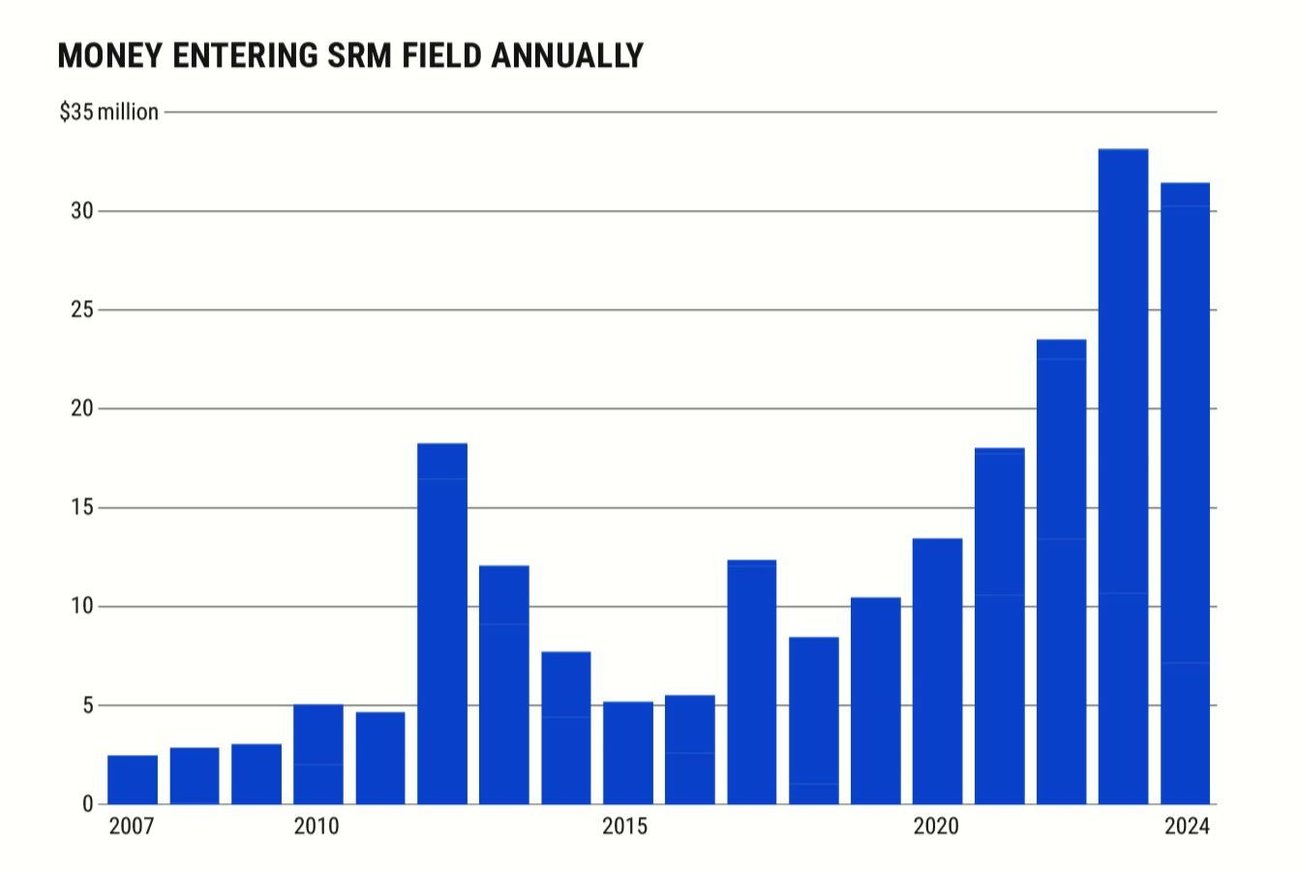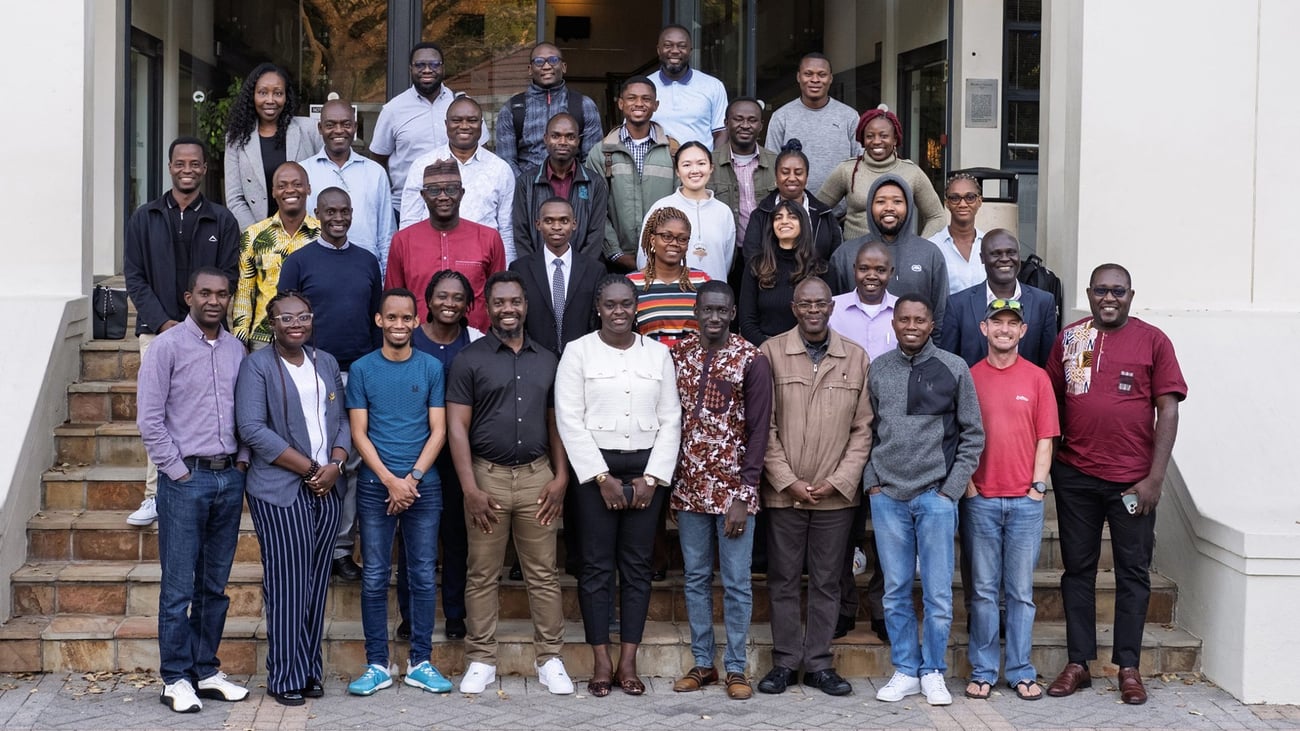|
|
May 2025 Update
Dear ,
The 2025 Degrees Global Forum – the largest conference to date on SRM – assembled researchers, NGO representatives, policymakers, thought leaders, and journalists from around the world to discuss the scientific, social, and political dimensions of SRM. If you missed our live coverage of the event, you can catch up on the highlights through our Degrees Daily Archive. And don’t miss Trisha Patel’s perspective below, based on her closing speech at the Forum.
Following ARIA’s Climate Cooling programme announcement earlier this month, we’re seeing significant media attention to SRM funding – with several outlets citing our new Funding Tracker.
And two new academic papers present significant findings related to stratospheric aerosol injection deployment: Duffey and colleagues suggest that SAI is feasible with existing aircraft, and Horton and colleagues find that only the US and China would have the capacity to deploy SAI unilaterally.
Those stories and more below.
-The SRM360 Team
|
|
|
New From SRM360 |
|
|

|
|
|
Funding for SRM has risen sharply in recent years, with most funding originating in and being spent in the Global North. We found that half of the funding for SRM comes from philanthropic sources, with individual philanthropic organisations outspending most nations. While we found no evidence of fossil fuel funding, anonymous sources and incomplete data raise questions. Explore these key takeaways in our SRM Funding Overview.
|
|
|
|
|
|
|
We hosted a live panel discussion at the Degrees Global Forum with leading African experts about the future of Africa, the climate outlook, and the potential and risks of SRM for the continent.
Listen at srm360.org or on your preferred podcast platform.
|
|
|
|
|
|
|
SRM Academic Highlights |
 |
Getty Images. Credit: Puneet Vikram Singh |
How might SRM affect rainfall in Southeast Asia?
Feng et al. used computer models to compare the impacts of different SRM strategies on rainfall in Southeast Asia. The group concluded that SRM could decrease extreme rainfall risks across most of the region, but SAI’s effects on extreme rainfall were uneven, putting some areas at more risk.
SAI is feasible with existing aircraft
At high latitudes, the stratosphere starts closer to the ground and existing aircraft can reach it. A new study by Duffy et al. found that SAI implemented at lower altitudes could produce a substantial cooling effect, though would be less efficient than higher altitude deployments, increasing negative side effects such as acid rain.
Only China and the US could deploy SAI unilaterally
In a recent analysis, Horton et al. determined that only China and the US would have the capacity and geopolitical power to conduct unilateral “Planetary, Large-scale, Uninterrupted, and Speedy” (PLUS) deployment of SAI, giving the US and China a pivotal role in determining whether and how SAI is implemented.
The history of SRM governance
This review by Jinnah and Dove covers the history of SRM governance and political milestones from 2006 to 2024. They highlight and explain key developments, identify gaps in governance, and discuss possible future trajectories.
MCB could impact stratospheric ozone
It is widely recognised that SAI could impact the recovery of the ozone layer. Bednarz et al. find that MCB could also have significant effects on stratospheric ozone. Despite being deployed far from the stratosphere, MCB would produce changes to atmospheric temperatures and circulation that would impact ozone levels.
An effective MCB trial
Hernandez-Jaramillo et al. present results from their MCB trial in Australia. They found that artificially generated sea-salt aerosols from their research vessel were able to reach the cloud base and change cloud properties.
|
|
|
Community and Events |
 |
Participants at the Africa Climate Intervention Research Hub meeting in Cape Town, South Africa – 8 May 2025. Photo Credit: ACIRH |
A new hub for SRM research in Africa
The Degrees Global Forum in Cape Town brought together 330 scientists, policymakers and NGO representatives from around the world, including over half from the Global South. The Africa Climate Intervention Research Hub launched at the event – a new initiative that aims to support researchers and build a knowledge base in Africa to inform policy discussions on specific regional impacts.
Making the case for African leadership on SRM
Hands Off Mother Earth claimed the Degrees Global Forum was an “effort to co-opt the African climate movement”, but African SRM researchers responded, arguing that “Calls to halt research under the banner of ‘anti-colonialism’ risk replicating colonial dynamics...". These researchers stressed: “We are not advocating for the deployment of SRM technologies. Instead, we
are investigating what SRM could mean for Africa.” This exchange follows a recent op-ed by Saliem Fakir and Shuchi Talati on Why African Leadership Matters in Geoengineering (Project Syndicate).
British perspectives on geoengineering
A new survey by YouGov explores public willingness to support geoengineering projects in the UK. Britons responded that more dramatic action is needed on climate change, but prefer to try to reduce consumption than use technological solutions. Younger audiences were most supportive of geoengineering techniques, whilst also being the most likely to say they are concerned about climate change as an issue.
Funding opportunity: Reflective
Reflective are releasing their first funding opportunity: Impacts and Tradeoffs of Simulated High-Latitude/Low-Altitude SAI Deployment. Submission deadline for proposals: 9 June.
CSEi receives $5 million grant from Quadrature Climate Foundation to advance SRM research
The three-year grant aims to reduce uncertainties surrounding the scientific, engineering, and economic practicalities of sulphate aerosol-based SRM.
|
|
|
|
|
|

|
Copyright (C) 2025 SRM360. All rights reserved. |
|
|